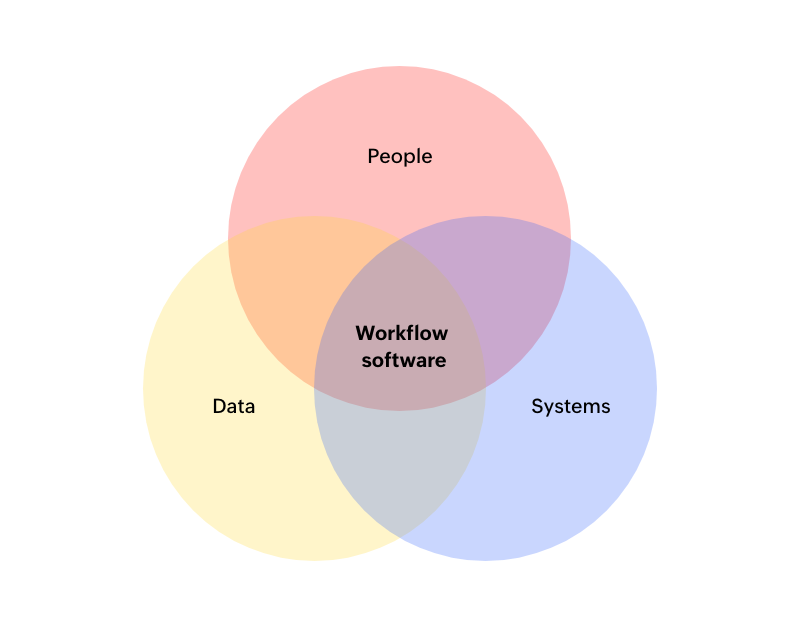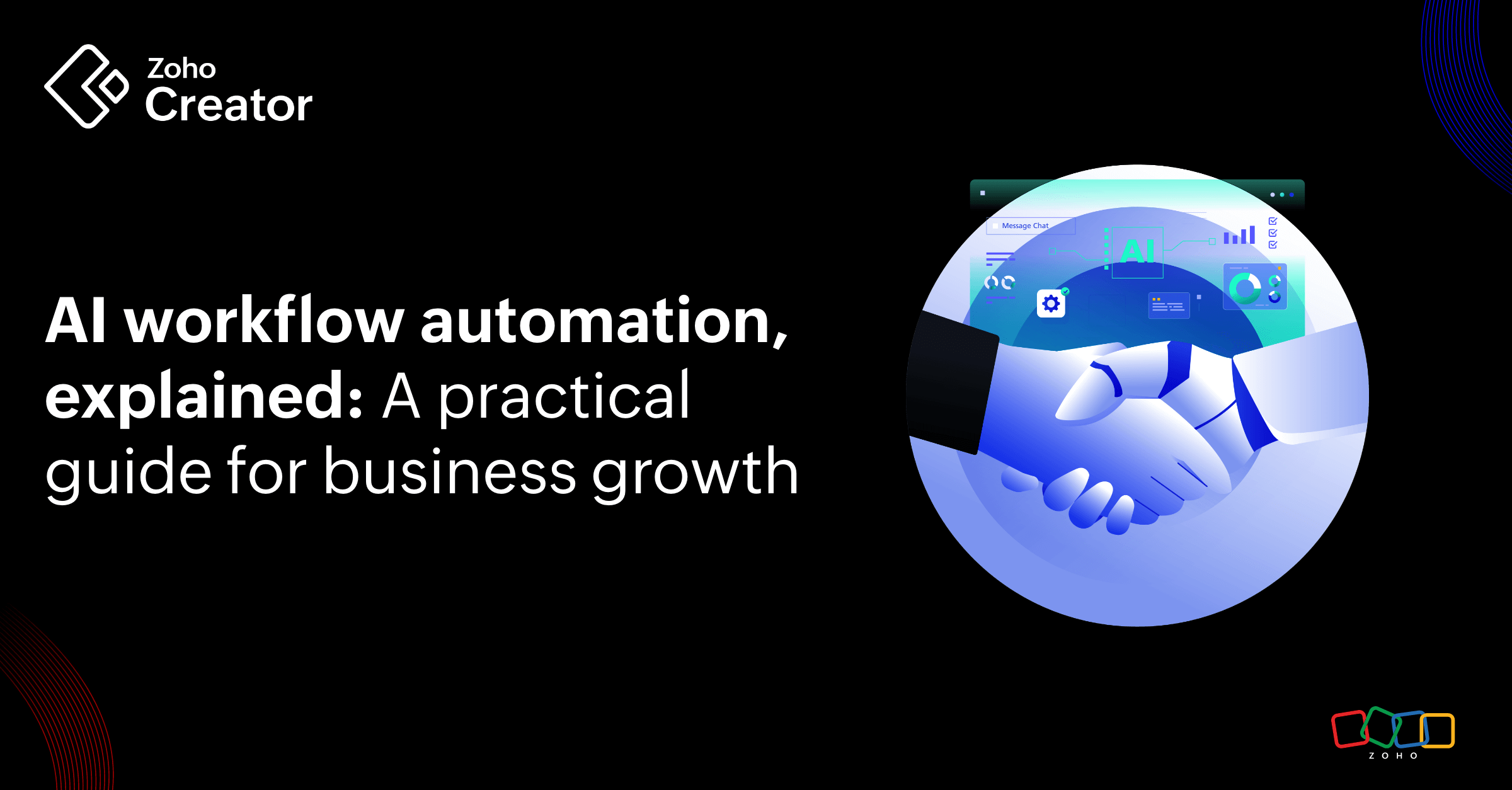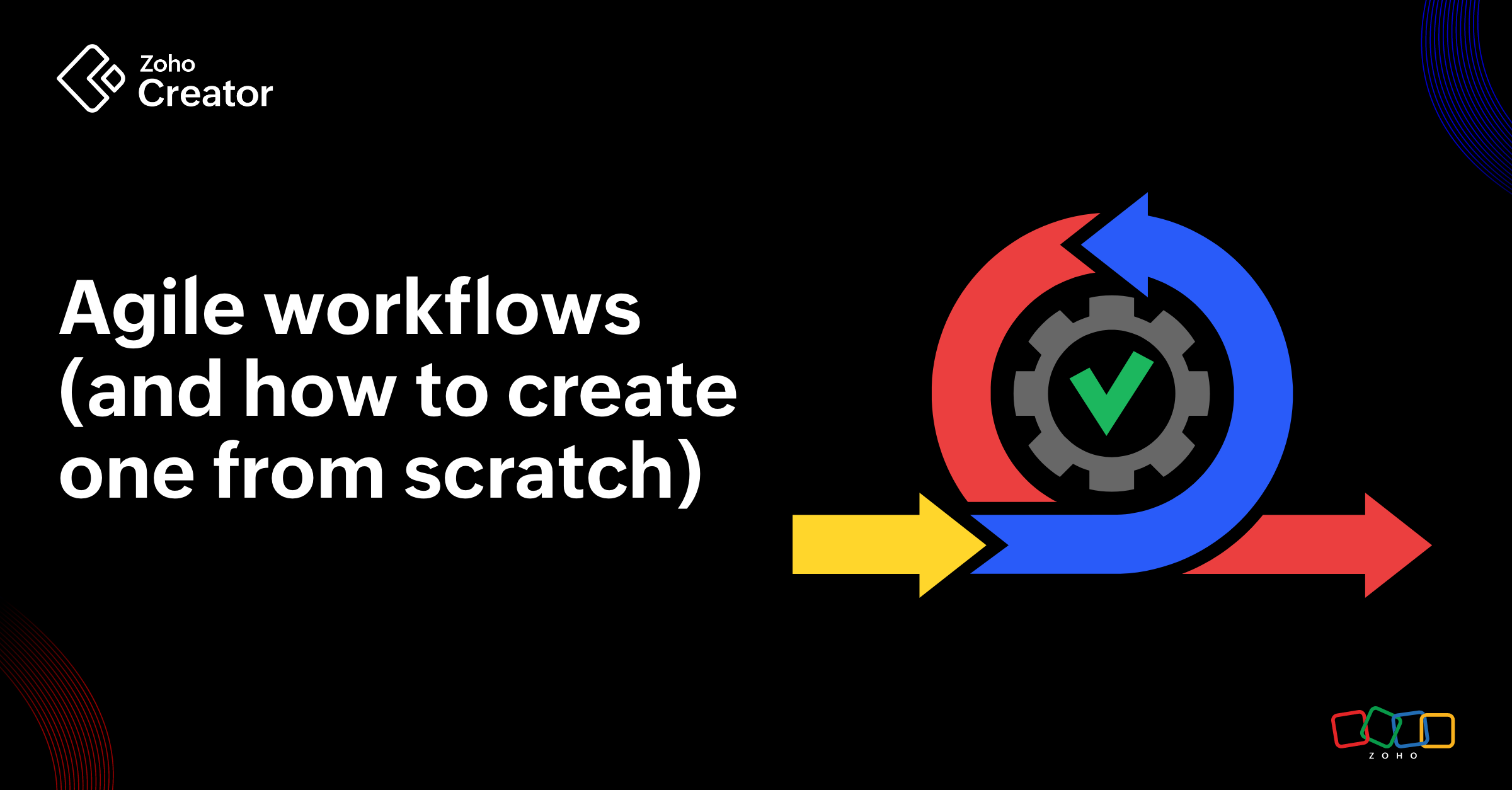- HOME
- Know Your Tech
- Workflow software features that support your process
Workflow software features that support your process
- Last Updated : May 27, 2025
- 56 Views
- 4 Min Read
Consider your smartphone—it’s your communication hub, productivity tool, navigation system, camera, and entertainment center, all rolled into one. We no longer juggle multiple devices for different tasks; instead, we rely on a single, integrated tool to do it all. Now, imagine having a tool that handles every process and operation of your business in one place. That’s what workflow automation does.
It brings together tasks, data, teams, and deadlines, streamlining it all into one easy-to-manage platform. With a good workflow automation software, you don't need multiple tools to manage different tasks. It’s your one-stop shop for smooth, efficient, and automated business processes.
What is workflow software?
Workflow software is a digital platform that automates tasks and manages business processes. It allows organizations to define sequences of steps, rules, and decisions.
At its core, workflow software serves three purposes:
To connect people: Assigns roles, notifies users, and enables team collaboration
To connect data: Links forms, systems, and databases across departments
To connect systems: Integrates seamlessly with other tools to create unified business processes
End-to-end features to power your processes
There are several key capabilities that any modern workflow software should offer. Each feature helps solve common pain points, boost efficiency, or enable smarter process management.
Visual development interface
A modern workflow system should offer an intuitive interface that simplifies process building, even for non-technical users. Visual tools like drag-and-drop builders let anyone create workflows without writing code.
Drag-and-drop functionality
Place actions, forms, and decisions directly onto a canvas. This approach makes workflow creation straightforward and accessible.
Prebuilt templates
Use prebuilt templates to help with routine business processes like onboarding or invoice approvals. These can be quickly customized instead of starting from scratch.
Cross-platform accessibility
Teams operate across devices and locations, so your workflow platform needs to support seamless access anytime, anywhere.
Multi-device compatibility
Initiate a workflow on one device and complete it on another without disruption.
Native mobile applications
Use native apps for iOS and Android, utilizing device-specific features like cameras and GPS to enhance user experience.
Offline mode support
Data should sync automatically once online, especially for field work and remote tasks.
Configurable workflow logic and automation
A capable workflow solution should support flexible logic and automation that adjusts to business needs.
Custom scripting support
Apply scripts or formulas—such as calculating taxes or triggering external APIs—for more tailored workflows.
Event-driven workflows
Launch processes automatically in response to events. For instance, canceling an order could initiate a refund workflow.
Conditional workflow support
Define conditions that guide process paths—for example, escalating a report only if it exceeds a specific amount.
Automated dependencies
Handle task dependencies by ensuring steps only proceed once prerequisite actions are complete.
Real-time notifications and alerts
Your workflow platform should keep users informed with timely updates and alerts.
Automated alerts
Get notifications when tasks are assigned or deadlines are close, helping users stay ahead.
Custom notification rules
Define alert conditions, like notifying finance for invoices over a certain threshold.
Multi-channel delivery
Get delivery via email, SMS, mobile apps, or chat tools, ensuring alerts reach users through their preferred channels.
User collaboration and communication
To enhance teamwork, the platform should facilitate efficient communication and shared access to tasks, documents, and workflow data.
Integrated communication channels
Comment and discuss directly within tasks or forms. This ensures conversations stay tied to the relevant process, reducing confusion and improving clarity.
External stakeholder access
Give limited access to external users—such as vendors or partners—so they can participate without exposing internal systems.
Reporting and analytics
Workflow platforms need to provide insights that drive continuous improvement.
Real-time dashboards
Display live metrics—such as average completion times or overdue tasks—to help teams make informed decisions.
Custom report generation
Generate detailed reports based on filters like department or date range.
AI-powered insights
Get intelligent suggestions, such as flagging frequent delays or forecasting missed deadlines.
Historical data analysis
Retain your workflow history for audits, trend analysis, and ongoing optimization.
Export options
Export data into formats like PDF, CSV, or XLSX, making it easier to share or present findings.
Scalability
As businesses grow, workflow software should scale effortlessly to match.
Elastic infrastructure
Expand resources dynamically during peak usage, ensuring performance is never compromised.
High availability and reliability
Maintain high uptime (99.9% or more), with failover systems and backups to ensure continuous operations.
Integrations with other tools
Workflow software needs to integrate with existing business systems to prevent silos and improve efficiency.
Third-party application integrations
Work seamlessly with popular tools like CRMs, accounting systems, and support platforms—keeping all data in sync.
API availability
Connect custom or legacy systems for deeper automation with APIs.
Webhooks support
Use webhooks for real-time event sharing—for example, updating inventory as soon as an order is fulfilled.
Security and compliance
Trustworthy workflow software should prioritize data protection and regulatory compliance.
Granular user permissions
Use fine-grained access controls to ensure users see only the data relevant to their role.
Multi-factor authentication
Implement secure login procedures that go beyond passwords—like SMS codes or authenticator apps.
Activity tracking logs
Maintain a detailed audit trail of all user actions to support compliance and auditing.
End-to-end encryption
Protect all data in transit and at rest using encryption protocols like SSL/TLS and AES.
Learn how to choose a suitable workflow automation platform in this blog.
Turn the mundane into momentum by automating workflows!
Workflow platforms keep work moving. They connect tasks, data, and people. With the right features—visual builders, mobile access, automation, collaboration, analytics, and security—your team can work faster and smarter.
If you're looking to put these ideas into action, Zoho Creator is a practical next step. It’s a low-code platform that delivers all of the above capabilities in one place—from visual process design to mobile access, rich analytics, and enterprise-grade security. Zoho Creator lets your team build and deploy custom workflow apps without heavy IT overhead. It’s the all-in-one solution that helps your business run smoother, faster, and smarter—and stay ahead of the curve.
 Bharathi Monika Venkatesan
Bharathi Monika VenkatesanBharathi Monika Venkatesan is a content writer at Zoho Creator. Outside of work, she enjoys exploring history, reading short novels, and cherishing moments of personal introspection.




